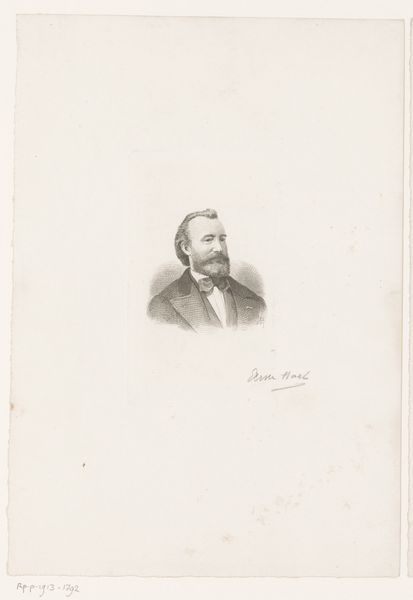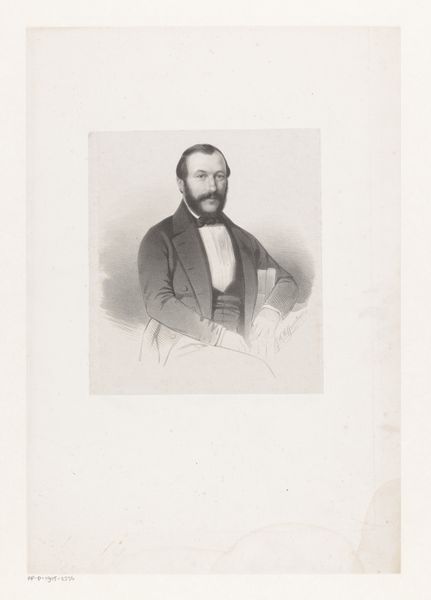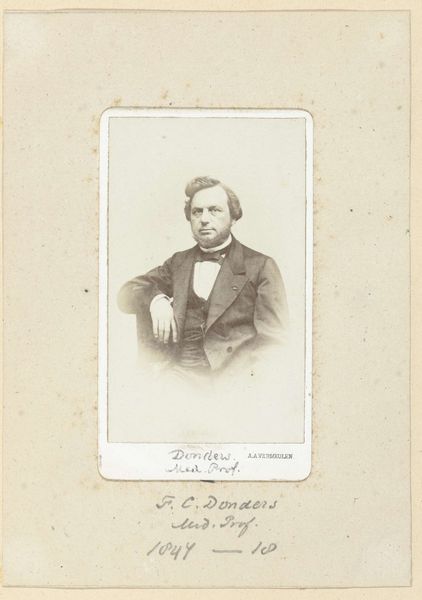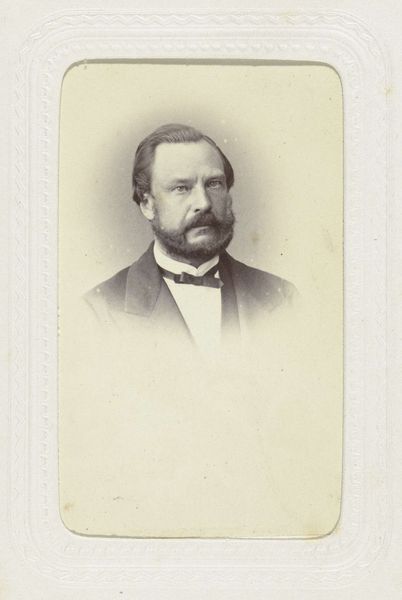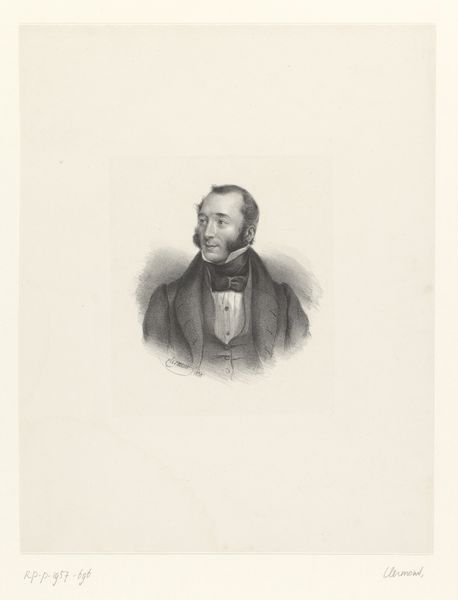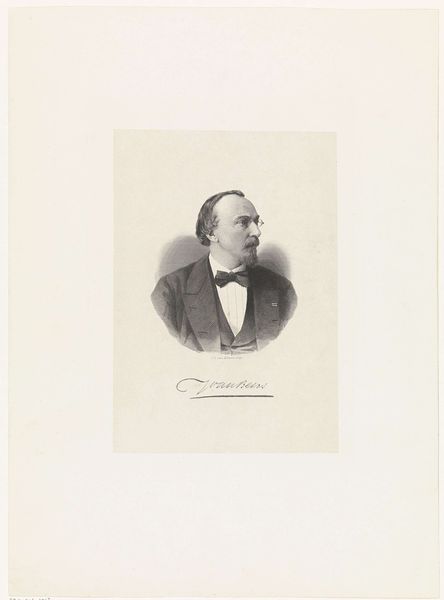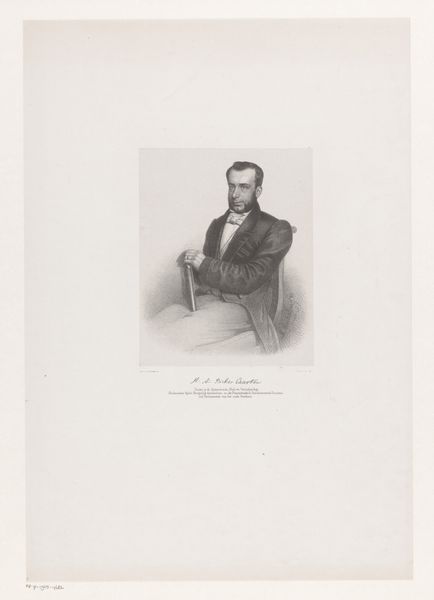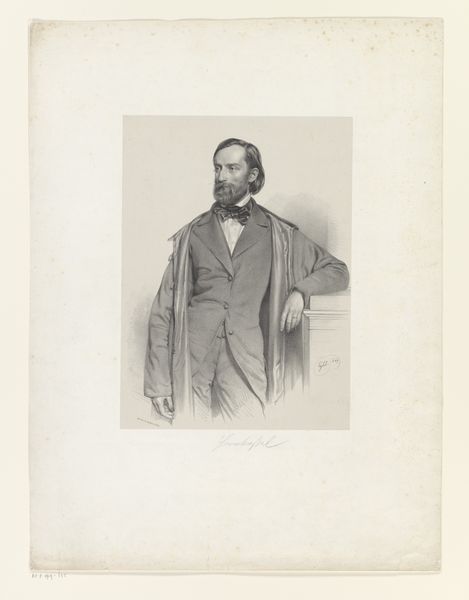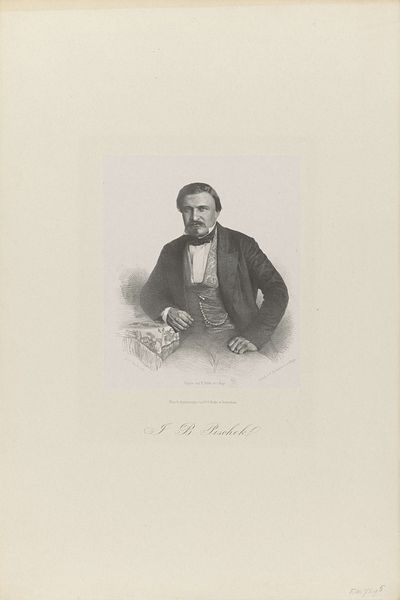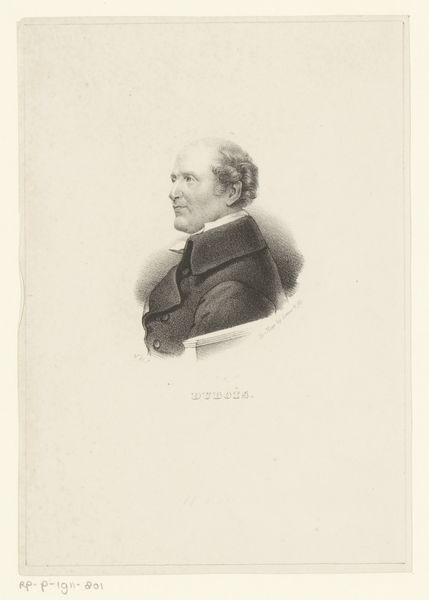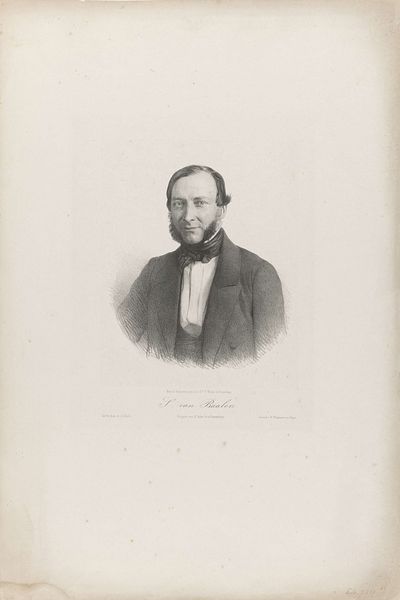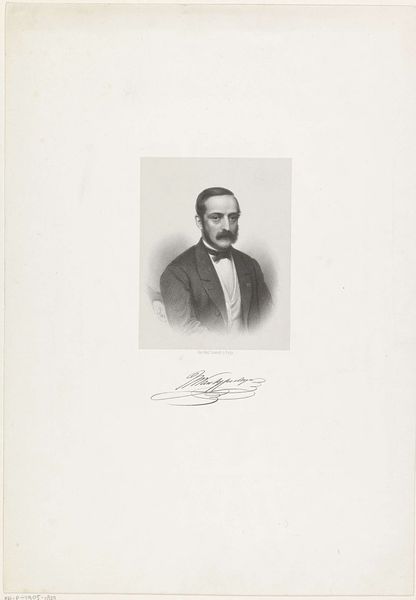
drawing, pencil
#
portrait
#
drawing
#
16_19th-century
#
pencil drawing
#
pencil
#
history-painting
#
academic-art
#
realism
Dimensions: height 287 mm, width 218 mm
Copyright: Rijks Museum: Open Domain
Curator: This is a portrait of Willem III, King of the Netherlands, rendered in pencil by Pierre Guillaume Metzmacher around 1862. Editor: It's strikingly formal, isn't it? Very… regal. The precision of the pencil strokes gives it an almost photographic quality. Though I wonder about the solemnity—it feels weighty, doesn't it? Curator: Absolutely. Portraiture of monarchs at this time was about solidifying power, projecting authority and lineage. Academic art like this followed strict conventions to uphold such ideals. The use of pencil—often considered a preparatory medium—allowed for meticulous detail, mirroring the king's precision and control. Editor: A control he seems keen to display! The ornate uniform, the decorations… it's all so carefully considered. But the softness of the pencil work softens it, too. Does that make sense? A sort of vulnerable majesty, etched so lightly? Curator: It’s an interesting point. Pencil was favored for its versatility; the artist can capture the king's likeness realistically while also conveying a sense of approachability. It also became popular as photography was becoming ubiquitous, so portraits took on more personal characteristics to distinguish themselves from the mechanical coldness of the new medium. Editor: Perhaps. The realism allows a glimpse beyond the crown and scepter. Still, I can't help but feel a sense of isolation from that gaze. Knowing a picture can have multiple interpretations and contexts changes everything, huh? Curator: It certainly does, and these shifts inform the artist’s intent, medium, reception, and more. Consider how changing media and technologies impact how images operate. Editor: Right. Well, I guess, beyond the history and power dynamics, what sticks with me is how art manages to humanize even the most formidable figures, revealing delicate layers beneath layers. Curator: Agreed. And examining artwork like this helps us examine how social norms play into even artistic representation.
Comments
No comments
Be the first to comment and join the conversation on the ultimate creative platform.
